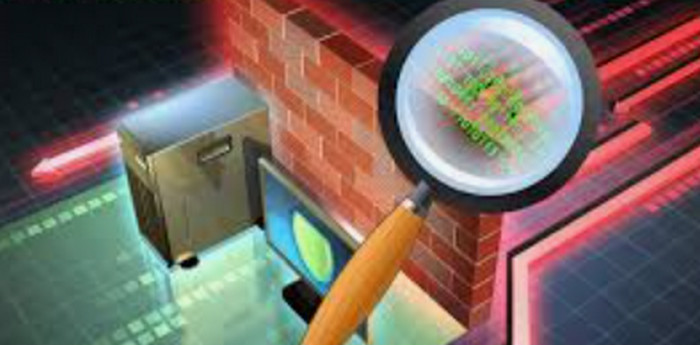Traditional perimeter-based security models are not keeping up with the ever-evolving cyber threats. A more reliable method of network security has been identified as the Zero Trust Architecture (ZTA), which operates under the premise that no entity—internal or external to the network—should be trusted by default. To improve network security, this article explores the fundamentals, advantages, and techniques of Zero Trust Architecture.
Comprehending Zero Trust Architecture
A security framework known as zero trust architecture requires rigorous verification for each attempt to enter a network. ZTA functions on the tenet that threats can originate from both within and outside the network, in contrast to conventional models that are primarily dependent on perimeter defenses like firewalls. As such, it necessitates constant user and device identification and authorization.
Fundamentals of Zero Trust:
Verify Clearly: Always rely on all accessible information when authenticating and granting access, such as the user’s identity, location, and device health, among other details.
Least Privilege Access: To reduce potential attack vectors, restrict user and device access to only the resources required for their responsibilities.
Assume Breach: Build the network with the knowledge that there has been a breach, and make sure that strong defenses are in place to swiftly identify, neutralize, and eliminate threats.
Zero Trust Architecture’s advantages
Enhanced Protection: ZTA greatly lowers the danger of unwanted access and data breaches by continuously authenticating users and devices.
Decreased Attack Surface: By implementing least privilege access constraints, attackers have fewer possible points of entry.
Better Monitoring and Incident Response: ZTA offers in-depth insights into network activity, facilitating enhanced visibility and control.
Resilience Against Insider Threats: Because strict authentication is required, even insiders are not automatically trusted, lowering the possibility of malevolent or compromised internal users.
Flexibility to Modern Work Environments: ZTA provides a versatile security architecture that adjusts to a range of dispersed and varied network environments, in line with the growing popularity of cloud services and remote work.
How to Put Zero Trust Architecture Into Practice
Describe the Protect Surface
Determine which of the applications, services, assets, and data (DAAS) are vital and require security. The protect surface may be adequately protected and is more manageable than the vast assault surface.
Chart the Transactional Flows
Recognize how people and devices interact with the protect surface by understanding the data and transaction flow across the network. The creation of effective security policies is aided by this mapping.
Develop a Strategy for Micro-Segmentation.
Segment the network into smaller parts and install security measures at each intersection. By limiting lateral mobility within the network, micro-segmentation contains breaches and lessens their impact.
Put robust identity and access management (IAM) into practice.
Strict access controls and multi-factor authentication (MFA) should be used to guarantee that only authorized and authenticated users can access network resources. Constant identity verification is made easier by implementing IAM solutions.
Implement Advanced Threat Identification and Reaction
To monitor and react to attacks in real time, use solutions like Intrusion Detection Systems (IDS), Endpoint Detection and Response (EDR), and Security Information and Event Management (SIEM). With the help of these technologies, you may quickly identify abnormalities and get complete visibility and insights.
Install Analytics and Continuous Monitoring
Use ongoing monitoring to keep tabs on device and user behavior throughout the network. By using analytics to spot suspicious activity and possible threats, you may take preventative security measures.
Update security controls and policies on a regular basis.
Security is a continuous endeavor. Review and update security policies, configurations, and access controls on a regular basis to keep up with emerging threats and network environment changes.
Best Practices for Implementing Zero Trust
Take a Gradual Approach
ZTA implementation can be difficult. Zero Trust principles should be gradually extended throughout the whole network, starting with high-risk regions. Implementation may be made manageable and scalable using this phased strategy.
Involve Stakeholders
Obtain support from all relevant parties, such as business units, IT departments, and security teams. Effectively addressing security requirements and operational needs requires collaboration.
Inform and Prepare Users
For Zero Trust to be successful, user knowledge is essential. Organize frequent training sessions to inform users of security procedures, policies, and the value of compliance.
Make Use of Automation
Reduce the workload for IT personnel by using automation to reliably implement security standards. Processes like monitoring, incident response, and access requests can be streamlined using automated workflows.
Connect with Current Security Instruments
Zero Trust aims to improve current security investments rather than replace them. To maximize ZTA’s capabilities, integrate it with your present security setup.
Implementing Zero Trust: Its Complexity and Costs
It can be difficult and expensive to implement zero trust, requiring large investments in resources, technology, and training. Nonetheless, the advantages of long-term security frequently exceed the early expenses.
Cultural Opposition
A move to Zero Trust from a traditional security architecture may encounter opposition from stakeholders used to the status quo. To overcome this obstacle, effective change management and transparent communication are crucial.
Combining Legacy Systems with Integration
It can be difficult to integrate Zero Trust concepts with legacy systems. In order to address compatibility difficulties, a comprehensive examination and a phased integration plan are required.
Ongoing Administration
Maintaining Zero Trust necessitates constant oversight and adjustment to changing risks. Organizations need to be ready for the ongoing work required to improve and preserve their security posture.
In summary
Zero Trust Architecture offers a thorough and durable method of safeguarding digital assets in an ever-complex threat environment, thereby bringing about a paradigm shift in network security. Through the application of its fundamental concepts and adherence to recommended methods, establishments can considerably improve their security stance, minimize hazards, and guarantee the confidentiality and integrity of their networks. Although achieving Zero Trust may not be easy, it will be well worth the cost in the long run because of the advantages of having a strong and flexible security framework.









